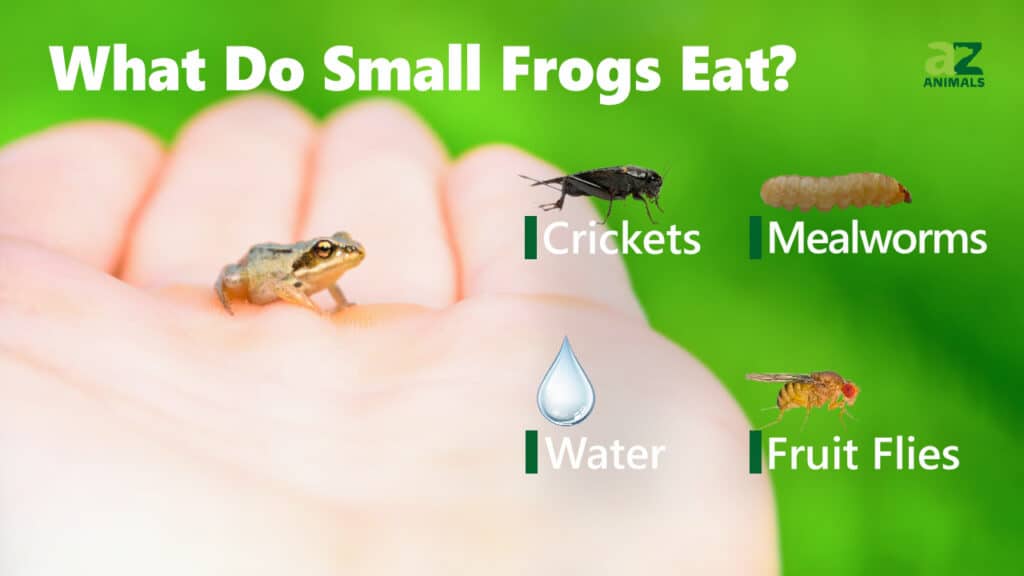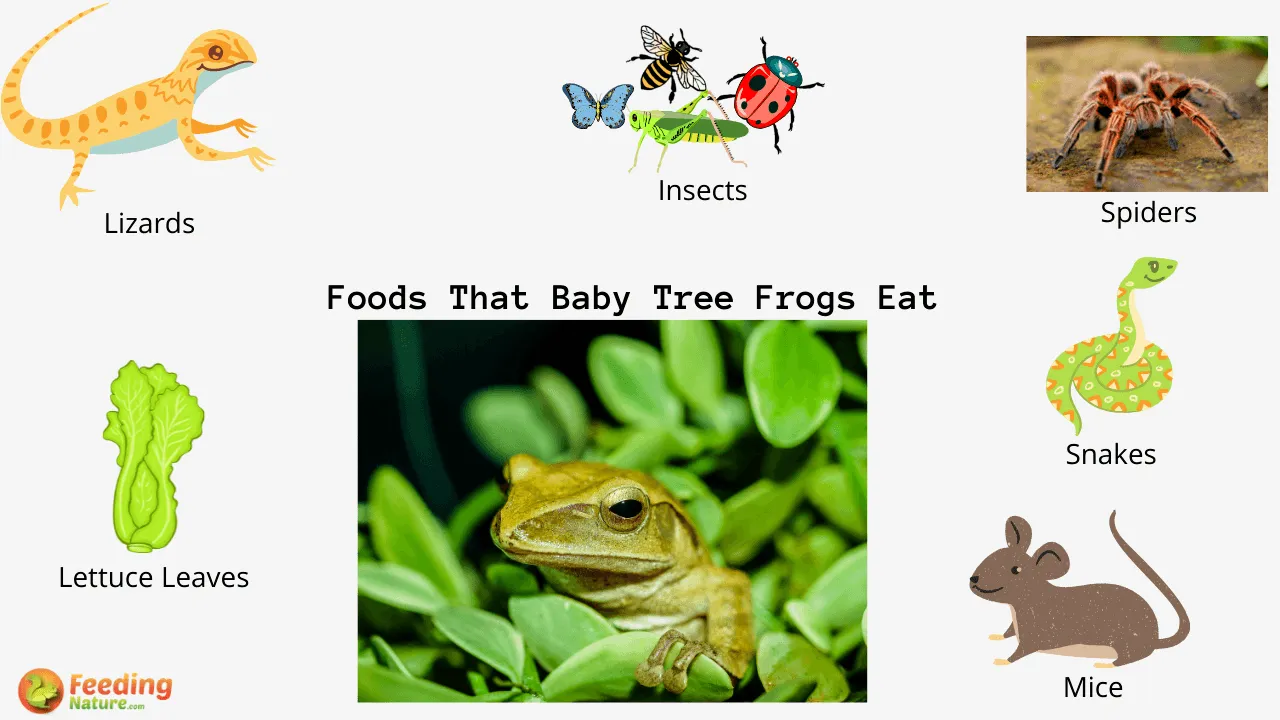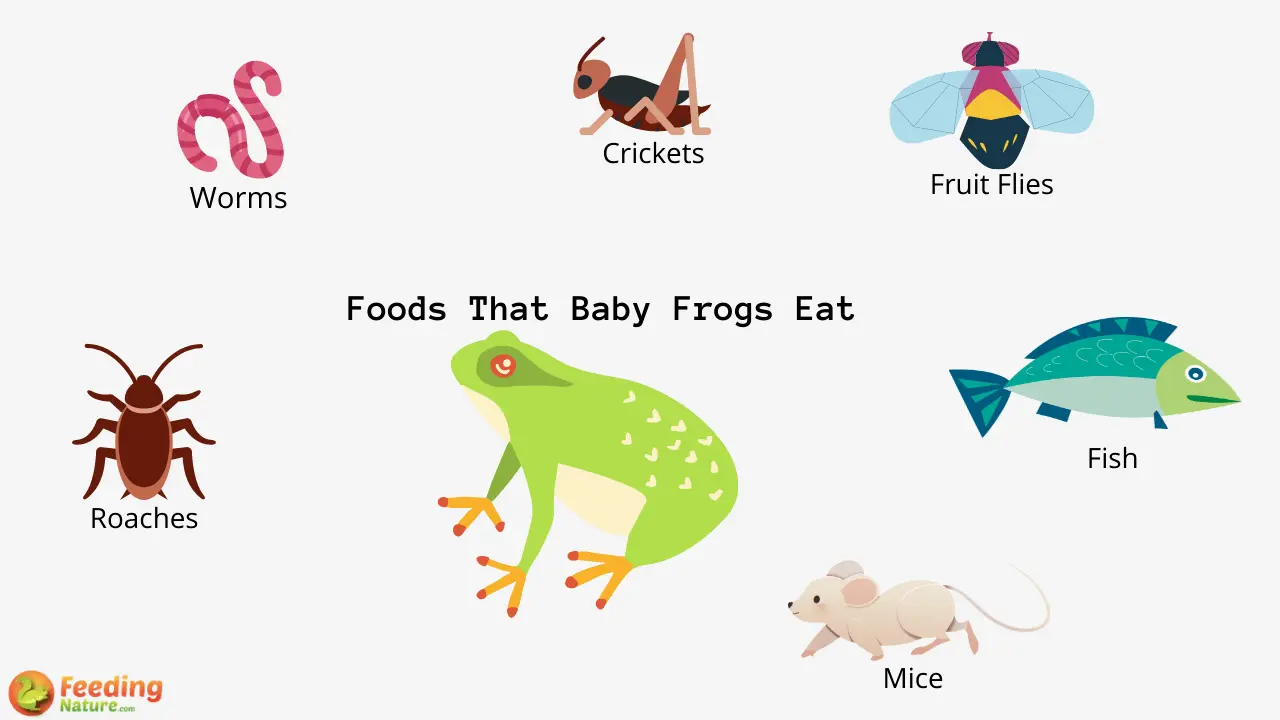What Do Baby Frogs Eat? The Surprising Truth
The transition from a tiny, aquatic tadpole to a hopping, insect-devouring frog is one of nature’s most fascinating transformations. But what fuels this metamorphosis? The answer lies in the surprising and often overlooked dietary habits of baby frogs. Forget the image of a fully grown frog snapping up flies; the reality of what baby frogs eat is a crucial part of their survival and development. This article will delve into the world of baby frog diets, revealing the truth behind their feeding habits and how they evolve.
The Tadpole Diet: A Vegetarian Beginning
Before they even remotely resemble a frog, baby frogs begin their lives as tadpoles, aquatic creatures that look more like miniature fish. Their diet during this stage is fundamentally different from their adult counterparts.
- Primarily Vegetarian: Tadpoles are herbivores, meaning their diet predominantly consists of plant matter.
- Algae and Detritus: They graze on algae, microscopic plants that grow in aquatic environments, and consume detritus, which is decaying organic matter like dead leaves and plant material.
- Specialized Mouthparts: Tadpoles possess specialized mouthparts, often with rasping structures, that allow them to efficiently scrape algae and other food particles from surfaces.
- Water Filtration: Some tadpole species also filter feed, straining tiny particles from the water using specialized structures.
The Shift to Carnivory: A Diet of Tiny Creatures
As tadpoles develop and begin to undergo metamorphosis, their dietary needs and preferences dramatically change. This transition marks the beginning of their carnivorous lifestyle.
- Insect Larvae: The developing froglets start to hunt for small insect larvae, such as mosquito larvae and other aquatic invertebrates.
- Small Insects: As they grow larger, they will include small insects within their diet.
- Cannibalism (In Some Cases): In resource-scarce environments, some tadpole species may resort to cannibalism, consuming smaller or weaker tadpoles. This is a survival strategy.
- Metamorphic Adaptations: The froglets develop a more effective hunting style, making them better at catching moving prey.
Factors Influencing Baby Frog Diets
Several factors can affect the specific diet of a baby frog, including:
- Species: Different frog species have different dietary preferences and adaptations. Some may remain primarily herbivorous for longer, while others transition to a carnivorous diet sooner.
- Habitat: The availability of food sources in the frog’s environment plays a significant role. If algae are abundant, tadpoles may thrive on a vegetarian diet. If insect larvae are plentiful, the froglets will lean toward a carnivorous diet.
- Size and Development Stage: The size and developmental stage of the baby frog directly influence what they are able to consume. Smaller individuals will focus on smaller prey.
- Environmental Conditions: Water temperature, water quality, and the presence of predators can also impact a baby frog’s diet and feeding behavior.
Feeding Baby Frogs in Captivity
If you are raising baby frogs in captivity, understanding their dietary needs is crucial for their health and survival.
- Tadpole Food: Provide a commercial tadpole food that is specifically formulated to meet their nutritional needs.
- Supplementation: Supplement their diet with blanched vegetables like spinach or lettuce.
- Froglet Food: Offer small live insects, such as fruit flies, pinhead crickets, or wingless fruit flies, depending on their size.
- Water Quality: Ensure clean water to prevent any disease or contamination.
Conclusion: A Dynamic Diet for a Dynamic Life
The diet of a baby frog is a testament to its adaptability and the remarkable process of metamorphosis. From vegetarian tadpoles grazing on algae to insect-hunting froglets, their dietary needs evolve to support their growth and prepare them for life as adult frogs. Understanding these dietary shifts is essential for appreciating the complexity of frog life and for successfully raising baby frogs in captivity.
FAQs
1. What do baby frogs eat in the wild?
Baby frogs primarily eat small insects, insect larvae, and other small invertebrates in the wild. The specific types of prey will vary depending on the frog species and the environment.
2. Can I feed baby frogs the same food as adult frogs?
No, baby frogs have different dietary needs and can’t eat the same food as adult frogs. Baby frogs are much smaller and need smaller prey items.
3. How often should I feed baby frogs in captivity?
The feeding frequency depends on the age and species of the baby frog. Generally, young froglets should be fed daily or every other day. Monitor their body condition and adjust the feeding schedule as needed.
4. What are some common mistakes in feeding baby frogs?
Common mistakes include overfeeding (leading to obesity), feeding the wrong type of food (too large or unsuitable for their size), and not providing a varied diet.




